Sri Mariamman Temple is Singapore's oldest Hindu temple, established in 1827. For Chinese temples, Thian Hock Keng Temple is the oldest, built in 1840 without using a single nail.
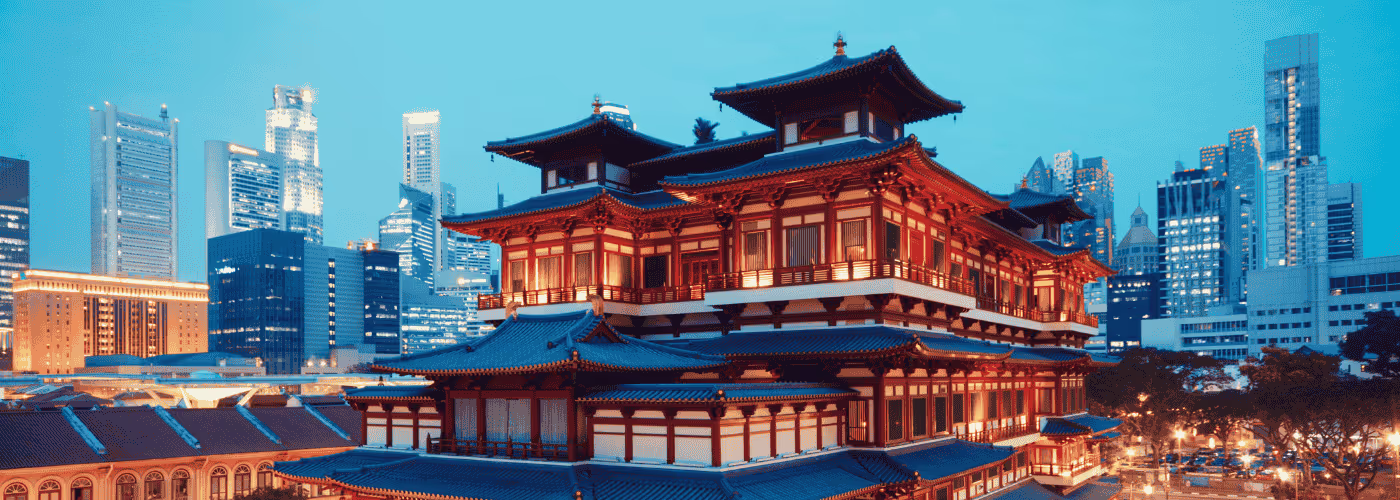
Singapore's religious landscape is as diverse as its population, with Buddhists, Taoists, Hindus, Muslims, and Christians living harmoniously side by side. This cultural tapestry is beautifully displayed in the country's temples, which range from centuries-old sanctuaries to modern architectural marvels.
Singapore's religious buildings showcase incredible architectural diversity, from ornate Hindu temples with detailed carvings to majestic Buddhist temples with striking red pagodas. These sacred spaces serve as both active places of worship and must-visit cultural attractions, offering visitors a glimpse into Singapore's rich multicultural heritage.
As you plan your temple explorations, remember that Singapore's compact size makes it possible to visit several temples in a single day. However, to truly appreciate the spiritual atmosphere and architectural details, consider dedicating adequate time to each site.
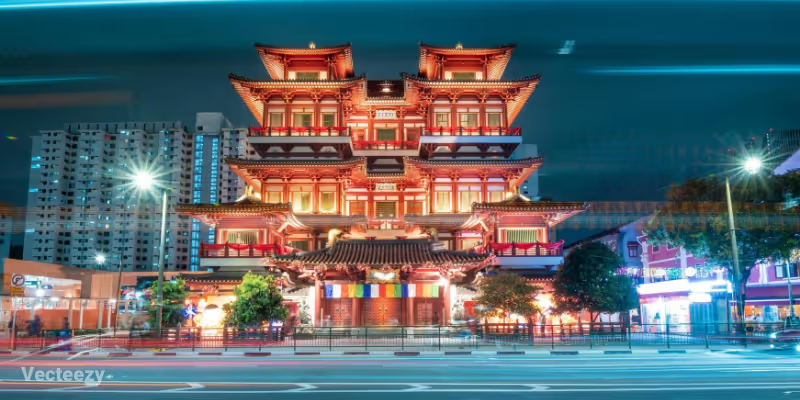
Standing majestically in Singapore's Chinatown, the Buddha Tooth Relic Temple is a relatively recent addition to Singapore's religious landscape, having opened in 2007. Its striking Tang Dynasty-inspired architecture makes it impossible to miss.
The temple's main draw is the Sacred Buddha Tooth Relic, housed in a massive stupa made from 320kg of gold. Beyond this precious artifact, visitors can explore multiple levels featuring prayer halls, a museum with Buddhist artifacts, and a peaceful rooftop garden with a massive prayer wheel.
What makes this temple special is its combination of religious significance and educational value. The Buddhist Culture Museum houses thousands of Buddha images and artifacts, while the fourth-floor Sacred Light Hall creates an atmosphere of reverence around the tooth relic.
Visitor Information:
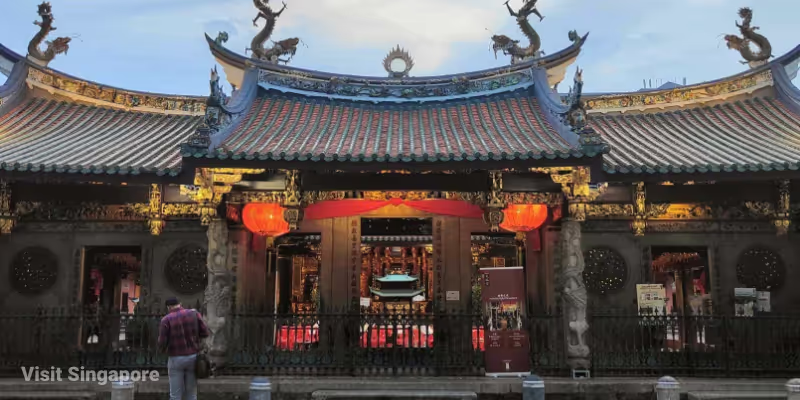
As Singapore's oldest Hokkien temple, Thian Hock Keng (Temple of Heavenly Happiness) holds a special place in the nation's history. Built in 1840 without using a single nail, this architectural masterpiece was once the first stop for Chinese immigrants after their perilous sea voyage to Singapore.
The temple is dedicated to Mazu, the Goddess of the Sea, whom sailors and travelers would thank for their safe passage. Walking through its ornate entrance with intricate dragon and phoenix pillars feels like stepping back in time.
The temple combines elements of Buddhism, Taoism, and traditional ancestor worship, reflecting the syncretic nature of Chinese religious practices. The detailed craftsmanship is evident in every corner – from the carved dragons on stone columns to the colorful ceramic figurines adorning the roof.
Visitor Information:
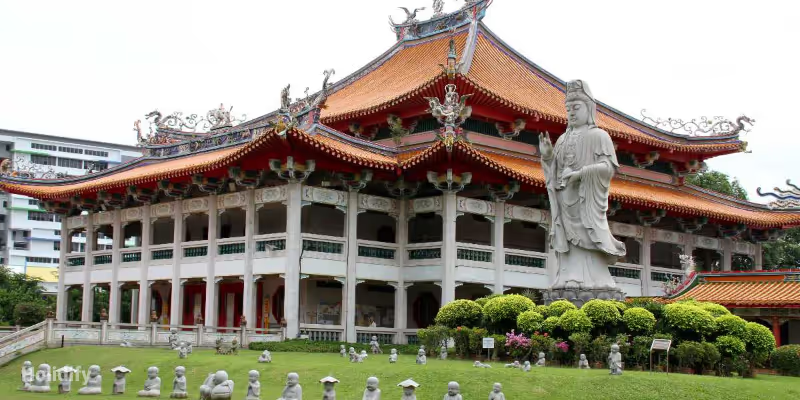
Sprawling across 12 hectares, Kong Meng San Phor Kark See is Singapore's largest Buddhist temple complex. Often called Bright Hill Temple, it serves as a sanctuary of peace amid the bustling city.
The monastery features multiple prayer halls, a crematorium, columbarium, and gardens designed for meditation and reflection. One of its most impressive features is the massive bronze Buddha statue surrounded by 10,000 smaller Buddha images.
Unlike some tourist-heavy religious sites, this monastery retains an authentic spiritual atmosphere, with monks and devotees going about their daily religious practices. The complex also houses the Buddhist College of Singapore, making it an important center for Buddhist education.
Visitor Information:

Known colloquially as the "Temple of 1,000 Lights," Sakya Muni Buddha Gaya Temple features a 15-meter-high Buddha statue that weighs 300 tonnes. What makes this statue particularly impressive is the ring of lights surrounding it, creating a mesmerizing effect that gives the temple its nickname.
Built in 1927, the temple blends Thai and Chinese Buddhist architectural elements. At the Buddha's feet, you'll find a small shrine containing a relic said to be from the original Bodhi Tree under which Buddha attained enlightenment.
The temple has a distinctly different feel from many of Singapore's other Buddhist temples, with its central focus on the massive Buddha figure creating a powerful spiritual focal point.
Visitor Information:
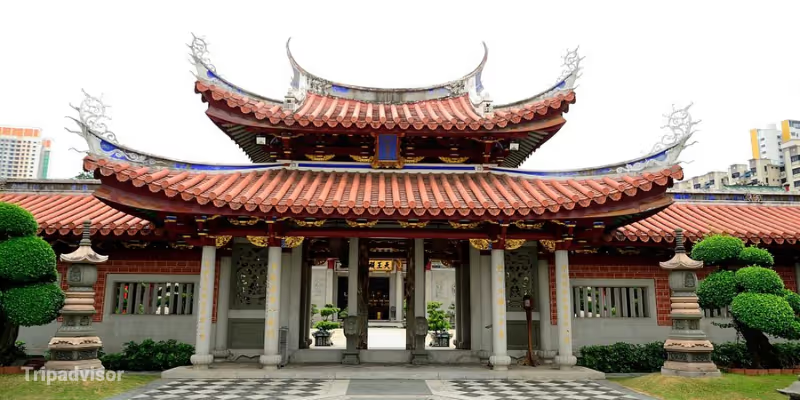
Singapore's oldest Buddhist monastery dates back to 1902 and is designed after the Xi Chang Shi Temple in Fuzhou, China. After extensive restoration, it now showcases the beauty of traditional Chinese Buddhist architecture.
The monastery's most striking feature is its seven-tier pagoda, which combines Chinese and Western architectural elements. Inside, you'll find halls dedicated to various Bodhisattvas, with the Grand Prayer Hall housing three large Buddha statues representing the past, present, and future.
What makes Lian Shan Shuang Lin special is its historical significance – it has witnessed Singapore's transformation from colony to independent nation while maintaining its role as a spiritual center.
Visitor Information:

As Singapore's oldest Hindu temple, Sri Mariamman Temple stands as a living monument to the early Tamil immigrants who arrived in Singapore in the 1800s. This temple isn't just historically significant – it's visually spectacular.
The temple's gopuram (entrance tower) is its most striking feature, adorned with six tiers of colorful sculptures depicting Hindu deities, mythological creatures, and scenes from Hindu mythology. These intricately crafted figures seem to tell countless stories to those who take the time to observe.
Beyond its role as a place of worship, Sri Mariamman has served important social functions throughout Singapore's history. It was once the only place Hindus could solemnize their marriages, and it provided a crucial gathering place for new Tamil immigrants.
The temple is particularly vibrant during the annual Theemithi (fire-walking ceremony) held in October or November, where devotees walk across a bed of hot embers to prove their faith and devotion.
Visitor Information:
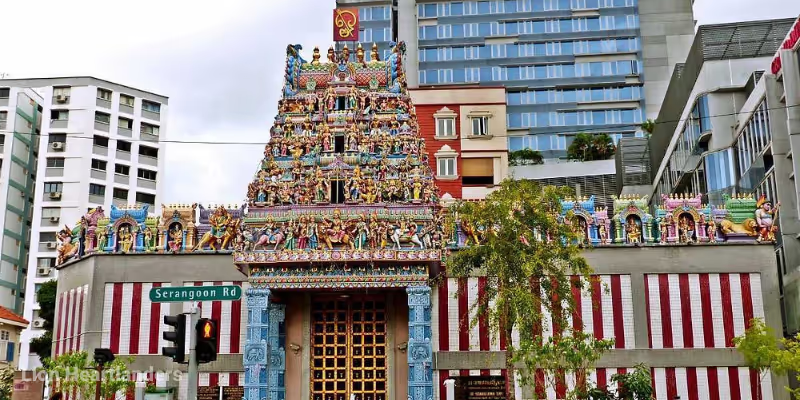
Located in the heart of Little India, Sri Veeramakaliamman Temple is dedicated to the fierce goddess Kali, the destroyer of evil. Built in 1881 by Bengali laborers, this temple stands as one of Singapore's most visually striking religious buildings.
Its gopuram features layers of brightly painted sculptures depicting various manifestations of the goddess and scenes from Hindu lore. The temple's interior is equally impressive, with statues of Kali and other deities adorned with fresh flower garlands and offerings.
What makes this temple particularly special is the sense of active devotion you'll witness. Unlike some tourist-oriented sites, Sri Veeramakaliamman remains a busy place of worship for Singapore's Hindu community, especially during festivals like Navratri and Deepavali.
Visitor Information:
Another gem in Little India, Sri Srinivasa Perumal Temple is dedicated to Lord Vishnu in his Srinivasa Perumal manifestation. Built in 1855, this temple is one of the oldest in Singapore and features a six-tier gopuram adorned with intricate sculptures depicting Vishnu's ten avatars.
The temple is most famous for being the starting point of the annual Thaipusam procession, where devotees carry kavadis (physical burdens) as acts of devotion, many with metal skewers piercing their bodies. This powerful demonstration of faith attracts thousands of spectators each year.
Inside, the temple is arranged in a traditional South Indian style, with a main shrine to Vishnu and smaller shrines dedicated to various aspects of him and other deities. The peaceful courtyard offers a respite from the bustling streets of Little India.
Visitor Information:

Also known as Chettiars' Temple or the Tank Road temple, Sri Thendayuthapani Temple was built in 1859 by the Chettiar community from Tamil Nadu. The temple is dedicated to Lord Murugan (also known as Subramaniam), the Hindu god of war and victory.
The temple's gopuram features detailed sculptures of Hindu deities in a beautiful blend of vivid colors. Inside, the main shrine to Lord Murugan is flanked by those of his consorts, Valli and Devani.
This temple is particularly significant during Thaipusam, as it serves as the final destination for the procession that begins at Sri Srinivasa Perumal Temple. The atmosphere during this festival is electric, with thousands of devotees fulfilling their vows through acts of devotion.
Visitor Information:
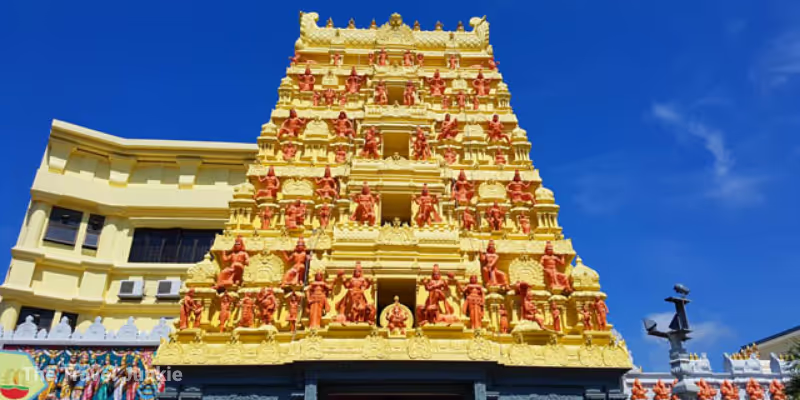
This beautiful temple dedicated to Lord Ganesha (the elephant-headed god) has a history stretching back to the 1850s, though the current structure was renovated in 2003. What makes this temple unique is its specific focus on Ganesha in his Senpaga Vinayagar form.
The temple's architecture follows the Chola style from Southern India, with a five-tier golden vimana (tower) above the main shrine. The intricate carvings and paintings throughout the temple depict various forms of Ganesha and scenes from Hindu mythology.
A highlight of this temple is the 21 different forms of Ganesha displayed within the main hall, each with distinct attributes and significance. This educational aspect helps visitors understand the complexity and nuances of Hindu iconography.
Visitor Information:
When visiting Singapore's temples, showing proper respect is essential. Here are some important guidelines to follow:
While the ten temples above represent the most magnificent religious sites in Singapore, several others are worth mentioning:
Temples aren't just architectural marvels or tourist attractions in Singapore– they're living centers of faith that showcase the nation's commitment to religious harmony and cultural preservation. From the serene Buddha Tooth Relic Temple to the vibrant Sri Mariamman Temple, each sacred space tells a unique story of Singapore's religious heritage.
Whether you're drawn by spiritual interest, architectural appreciation, or cultural curiosity, a temple tour of Singapore offers profound insights into the beliefs and traditions that have shaped this diverse nation. Take time to observe, listen, and absorb the atmosphere of these sacred spaces – you'll come away with a deeper understanding of Singapore's soul.

Sri Mariamman Temple is Singapore's oldest Hindu temple, established in 1827. For Chinese temples, Thian Hock Keng Temple is the oldest, built in 1840 without using a single nail.

Yes, most temples in Singapore welcome visitors of all faiths and backgrounds. However, respect for local customs and proper attire are expected.

Visitors should dress modestly, covering shoulders and knees. Some temples provide sarongs or shawls for those who need them. Always remove your shoes before entering temple buildings.

Early mornings and weekdays typically offer a more peaceful experience with fewer crowds. However, visiting during festivals provides insight into vibrant cultural celebrations, though expect larger crowds.

Photography is generally permitted in common areas of most temples but may be restricted in main prayer halls or around certain sacred objects. Always look for signs or ask permission before taking photos.

Most temples in Singapore offer free entry, though donations are appreciated. Some may charge a small fee for special exhibitions or for photography.

The Buddha Tooth Relic Temple with its Tang Dynasty-inspired architecture and Sri Mariamman Temple with its spectacular gopuram (entrance tower) are often considered the most architecturally impressive temples in Singapore.

Some temples, like the Buddha Tooth Relic Temple, offer guided tours on scheduled days. Others have information boards or audio guides available.

Thaipusam is a Hindu festival celebrating Lord Murugan. In Singapore, it involves a procession from Sri Srinivasa Perumal Temple to Sri Thendayuthapani Temple, with devotees carrying kavadis (physical burdens) as acts of devotion.

For most temples, 30-60 minutes is sufficient for a general visit. However, larger complexes like Kong Meng San Phor Kark See Monastery or the Buddha Tooth Relic Temple and Museum may require 1-2 hours to fully explore.